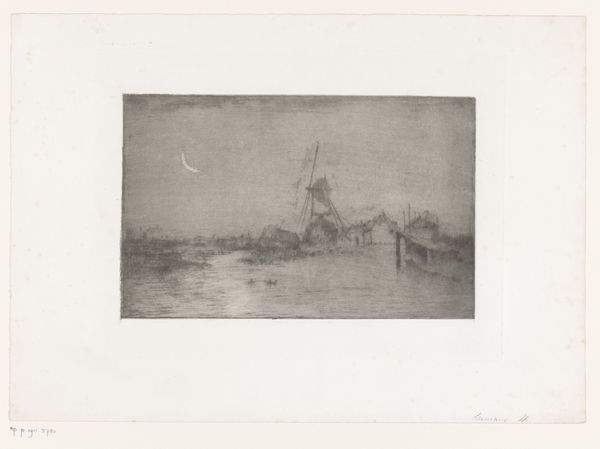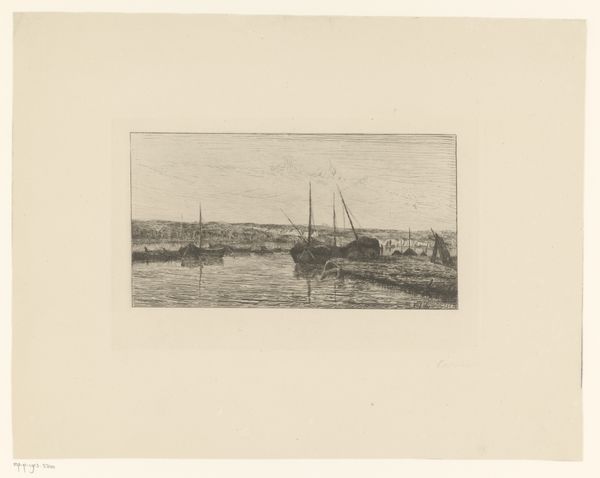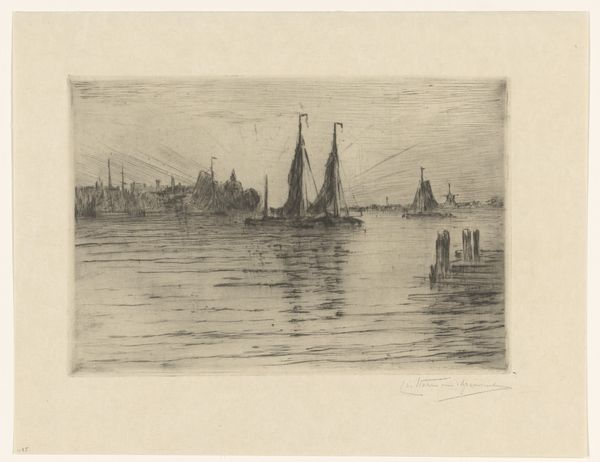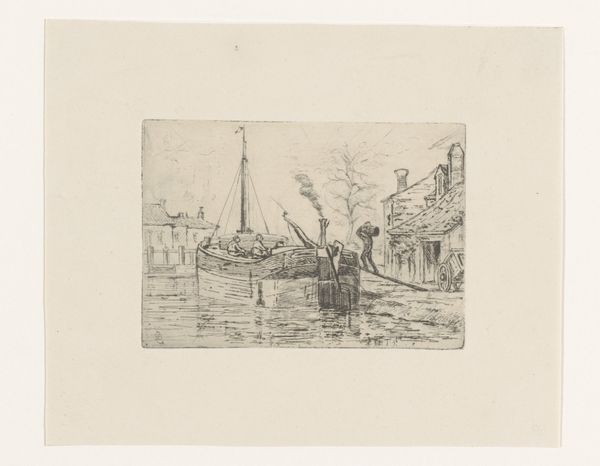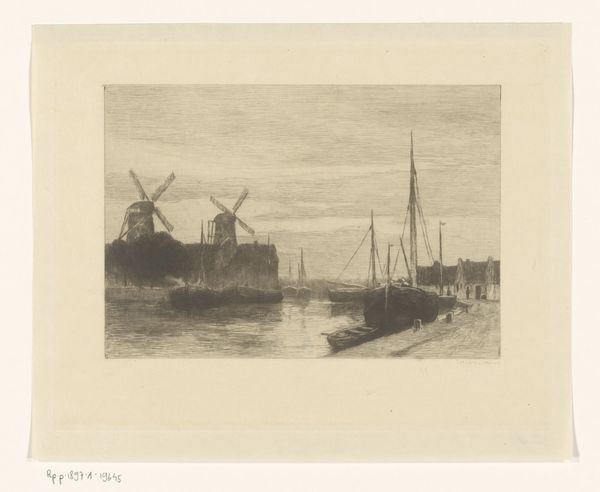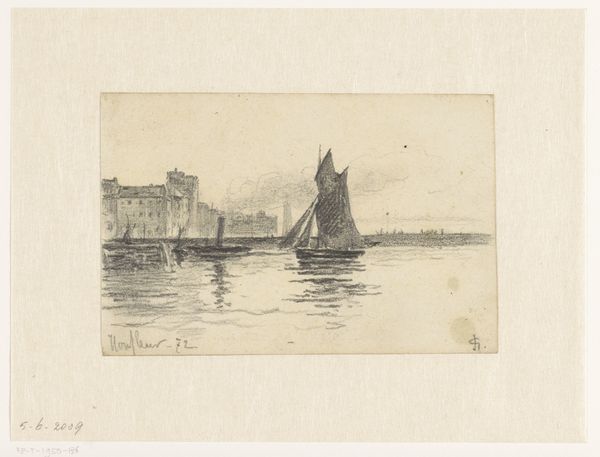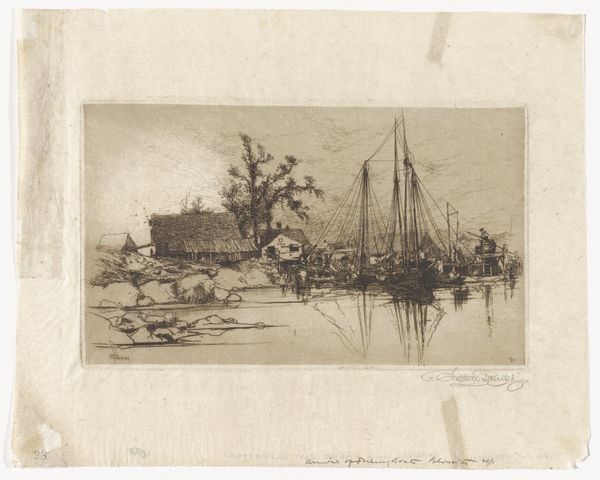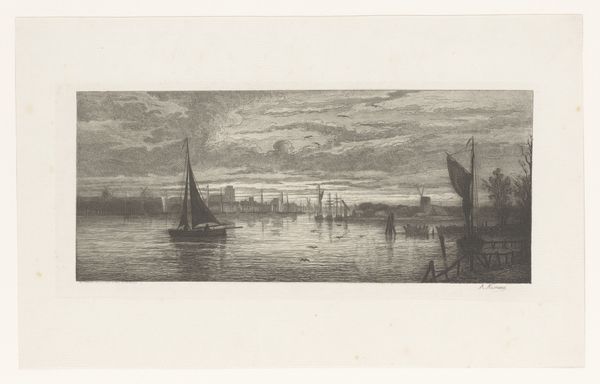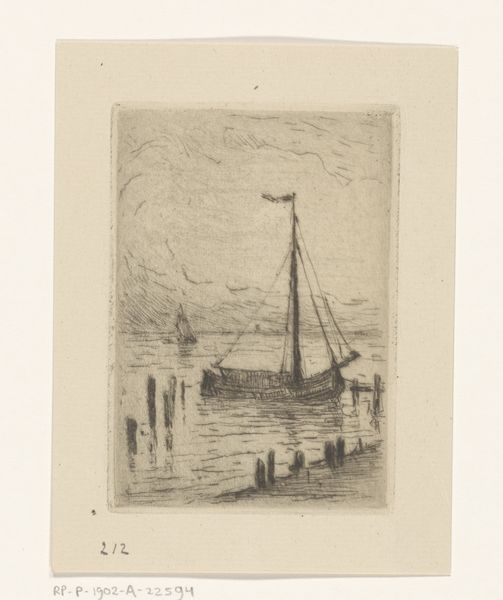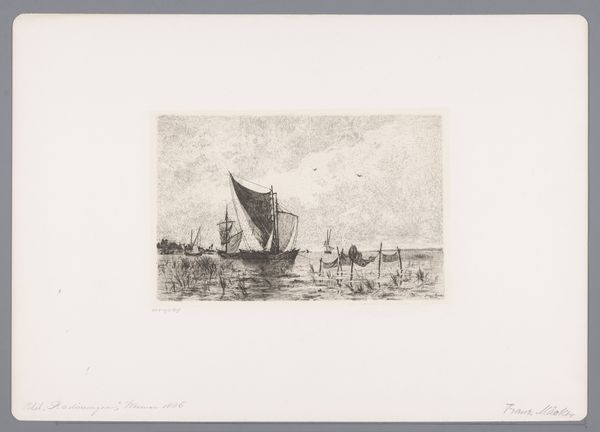
Landschap bij maanlicht met windmolen en enkele gebouwen aan een meer 1849 - 1883
0:00
0:00
egidefrancoisleemans
Rijksmuseum
Dimensions: height 239 mm, width 320 mm
Copyright: Rijks Museum: Open Domain
Editor: This is "Landscape by Moonlight with Windmill and Some Buildings by a Lake" by Egide François Leemans, likely etched sometime between 1849 and 1883. It's a captivating little print! The soft lines create this hushed, dreamlike feel. I'm particularly drawn to the almost ghostly quality of the windmill against the muted sky. How do you interpret the stark, geometric lines within such a soft landscape? Curator: The emphasis on line is crucial here, you're right. Consider how Leemans deploys it not just to depict form but to create value and texture. The density and direction of these etched lines establish the overall atmospheric mood, one of tranquility, perhaps, yet with a clear compositional structure. Editor: It almost feels like a contradiction. It is very soothing and serene but quite structured as well, what would you say about the symbolism that it has? Curator: Indeed. Observe the formal relationships, as semiotics tell us they are laden with implied meaning. Note how the artist positions the windmill—a traditional Dutch symbol representing progress and industriousness—as a stark contrast to the gentle body of water, a representation of nature, existing simultaneously. This tension highlights our engagement with space as a formal visual question. Does the formal arrangement suggest a particular narrative or meaning beyond this simple observation? Editor: I think the etching feels almost fragile due to its monochromatic and simple composition. I suppose what I am learning is the artist is creating tension within an almost minimalistic composition. Is there something special to note about the texture? Curator: The texture, while delicate, contributes greatly to the artwork's power. Notice how the etched lines create the texture to build form through value gradations. Consider the subtle ways that tonal variations imply a spatial dimension, despite the flattening effect inherent in printmaking. Editor: Looking more closely now, I notice that too. I hadn’t thought about the depth the etching lines created. I definitely learned to look beyond just what’s represented to understand the artist’s hand more fully. Curator: Precisely. Analyzing the technique allows a deeper comprehension of form. Thank you for sharing your perspective.
Comments
No comments
Be the first to comment and join the conversation on the ultimate creative platform.
